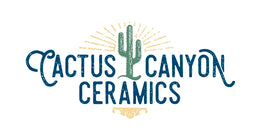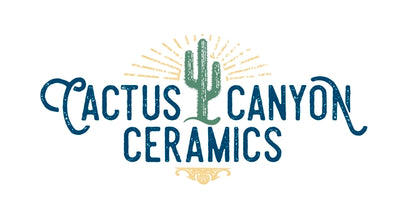Recently, a US District Court in Minnesota sided with one of the largest olive oil companies in the world, and ordered a permanent injunction against further publication or dissemination of false and misleading information circulated on social media. The main source for the information circulated on social media is a heavily read, referenced and criticized study conducted by the University of California at Davis in 2010. The study, which I believe was financed by California olive oil producers, found that 69% of the imported extra virgin olive oil (EVOO) samples purchased in California supermarkets failed the human taste panel. That is to say, 69% of the samples did not meet the standards for being labeled “extra virgin olive oil”. This was in 2010. And the report shook the olive oil industry.
In the ruling, the judge pointed out that olive oil varies from lot to lot, year to year and season to season, and that social media posts based on a study in 2010 were not pertinent or fair to the olive oil bottled in 2018.
Quality Varies from Lot to Lot – Year to Year & Season to Season
This is true and important, and not something clearly understood by consumers. Year to year changes in amount of precipitation, timing of the precipitation, timeliness of the weed control, timeliness of pest control, etc. There are many factors that can vary year to year.

Each season is different. For example, I am writing this on the 5th of December, 2018. The harvest season in Andalusia is much behind the harvest season of 2017. We had a series of weeks near the end of October, and first half of November when it rained significantly several days per week. This stopped machines, trucks and personnel from entering the orchards and harvesting. From several conversations with producers, I learned that this particular crop bears good volume, but much of it may be harvested in the “ripe” stage which will diminish the flavor profile of later harvested lots. There will be high quality extra virgin olive oil produced, but it will be distinct in flavor and body from previous seasons. I also learned that the harvest is “poor” in Italy and Greece so they are already purchasing extra virgin olive oil in bulk from the Spanish producers.
“Lots” refer to olive oil produced in a specific place, at a specific time. It goes without too much analysis that there can be quite significant changes in the quality from one lot to another. Picture one “lot” harvested at 5000 feet among rocks, and another “lot” harvested in lush, well maintained olive orchards sprawling near a river.
Large Bottlers vs Small Boutique Bottlers
It should be clarified that large producers face many challenges in providing top quality extra virgin olive oil. This is witnessed by reading the label. Some of the major producer’s bottle labels will list “Spain, Portugal, Italy or Greece” as the source. They don’t know or can’t say exactly. Large olive oil companies make bulk purchases from many countries/regions and then mix it all together and bottle it. Every region is probably experiencing a different season than the last. So the EVOO is the result of many varieties of olives, under different conditions from many locations. The result is a mix, and may not be to the consumers taste.
I know that much of the EVOO produced in Andalusia is sold in bulk to companies in Italy, Greece and Portugal. Tanker trucks leave the Spanish molinos with their shipping manifests and dump their cargo at distant destinations where other tanker trucks line up. And, you can be sure that each molino will not send their best EVOO down the road at bulk prices.
Another major challenge for large companies that bottle a lot, is their effort to control the cost. Personally, I believe they are looking to toe the line with their product. They want their product to comply with the minimum requirements required for extra virgin olive oil, but also pay the lowest cost possible. I would imagine that the chemist may be one of the most important members on a bottling team in one of these companies. Mixing varieties and qualities (possibly even adding lower quality oils such as virgin, or even just olive oil) while still meeting the minimum requirements. There are minimum physical and chemical parameters that have to be met, as well as sensory standards that are measured through a taste test. The easiest criteria to meet is the physical and chemical parameters, and where the large bottlers usually miss the boat is on sensory standards (which is the taste primarily, and the smell). I just wrote a blog post about problems many major companies are facing with the sensory standards of their EVOO sold in Spanish supermarkets. And Spain is the world’s heart of olive oil production. You can see the blog here).
Wanting it Both Ways!
While it is fair that companies should not be put through the social media wringer for years because of a shipment of poor quality EVOO – each season, each year and every lot is a different EVOO. Still, it is a bed they made for themselves and must lie in it. Low quality olive oil posing as EVOO should never be shipped. Each years product leads to a reputation. Selling low quality has been easy for olive oil producers in the past but is getting to be more difficult. For years now, many of the US customers did not know what good extra virgin olive oil is, and unscrupulous merchants were willing to “run the gamut” in the hopes of making a huge profit by providing low quality olive oil in a fancy bottle with a label telling a story. But pretty bottles and labels, and a reference to “Made in Gramma’s olive orchard in Italy” only goes so far. The US consumer is learning. There will be a day when US consumers expect quality when they pay for quality, and that sub-standard product is labeled as such.
Another issue that pertains to this is that many companies tout their product by advertising “Selected for the Gold Prize” in the so-and-so contest on their labeling. And again, this may have been true for one bottle of EVOO, at a certain time, sent to a specific contest where they have friends, etc. but it does not necessarily pertain to the quality of the EVOO bottled every season from every lot. It is a lot of smoke and a discerning EVOO fan must peer through the smoke when selecting their table top olive juice.
So, olive oil companies want credit for their “Gold Prize” entries, but not be held accountable for low quality product reaching the market. It is hard to have it both ways but the olive oil industry is trying hard to not be held accountable for past products. As can be seen with this ruling from the US District Court in Minnesota. Which, again I think is fair.
Find a Trusted Source
With all the smoke and mirrors in the olive oil market, those interested in enjoying premium quality extra virgin olive oil must find a source they trust. There is no other way. The large box-store, low cost product will be good for low temperature cooking, where flavor is not important. I recommend reading product labels, reading product listings on amazon and using your head in selecting a premium quality extra virgin olive oil to finish your food and provide culinary delight.
GringoCool
Please consider our premium quality extra virgin olive oils. We work hard to provide only the very best, premium quality extra virgin olive oils. This season, we are offering our “GringoCool Tasting Set of Spanish Extra Virgin Olive Oils“.The set includes 3 bottles, each approximately 8.45 fl. oz. (250ml). The three varieties are: an unfiltered Hojiblanca, a filtered 100% organic Picual and our new unfiltered coupage of Arbequino and Manzanilla.

We also offer one and two bottle boxes of our 100% organic Picual and conventional, mouth watering Hojiblanca. Each bottle is 16.9 fl. oz. (500ml). You can find us at gringocool.com or on amazon (search for GringoCool)

Thanks for reading. Comments and questions are welcome. Have a great day – Steve


